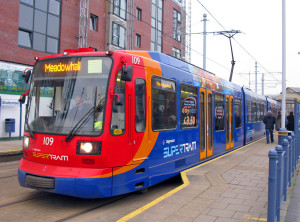Cambridge: right-sized for Light Rail…?
According to the International Association of Public Transport (UITP), Light Rail is ideal for carrying 3K to 11K passengers per hour per direction.

Based on our calculations of approximate peak demand in 2011 of 7281 journeys per hour +285 tourist journeys per hour, this would result in a total of 7566 passengers per hour on the system, or about 3783 per hour per direction. This is above the lower end of the range assessed by the UITP as ‘ideal’ for Light Rail. The demand projected for 2031, including with the proportion of people taking public transport increasing to around 15%, would be 16 108 journeys per hour with ~336 tourist journeys per hour, or in total 16 444 journeys per hour. This places demand at ~8222 journeys per hour in each direction, which is in the mid-range of the UITP ‘ideal’ bracket for light rail. Because light rail can carry many times more than this number, the system is scalable for expansion and thus future-proofed.
We also need to take into account demand when a system would be operational beyond 2032. The transport network designed and built over the next 10 years will remain in place for at least 20 years beyond commissioning. It is extremely important that the capacity of the system selected is capable of meeting future needs. This is especially the case with fixed infrastructure such as the tunnel, which should not be undersized and incapable of meeting future needs or technologies.
The intent of our work thus far has been to provide some broad guidance on numbers, based on existing data. However, we recognise there is a need for a detailed scientific evaluation of passenger numbers, including of projected and latent demand, and we call for this as part of the full technical and economic feasibility studies we recommend.







